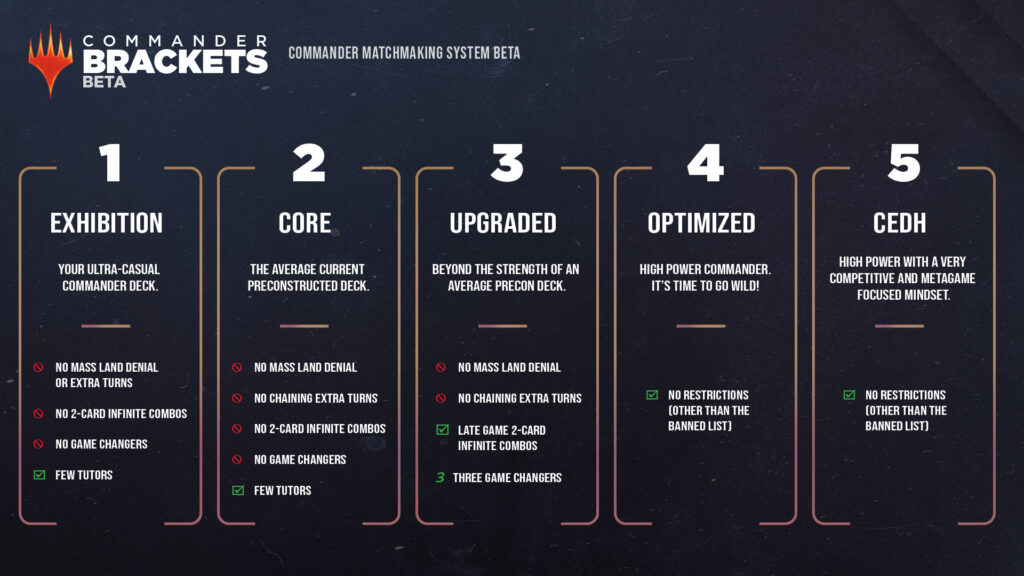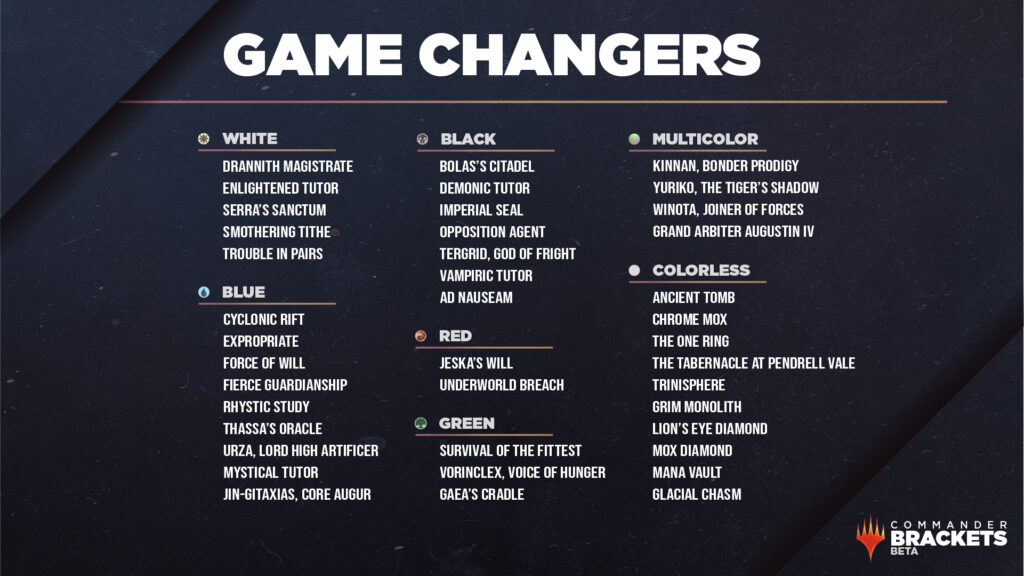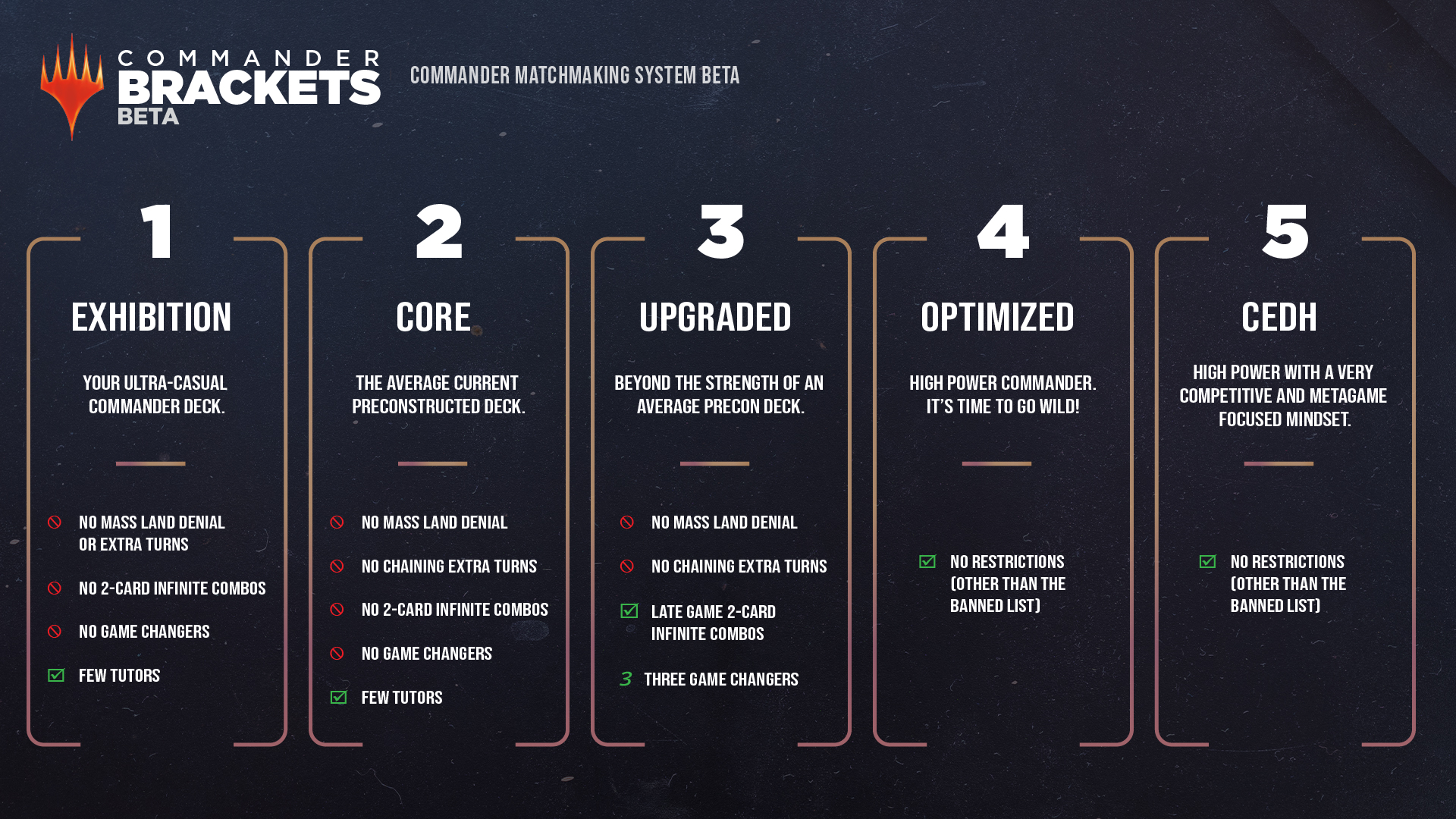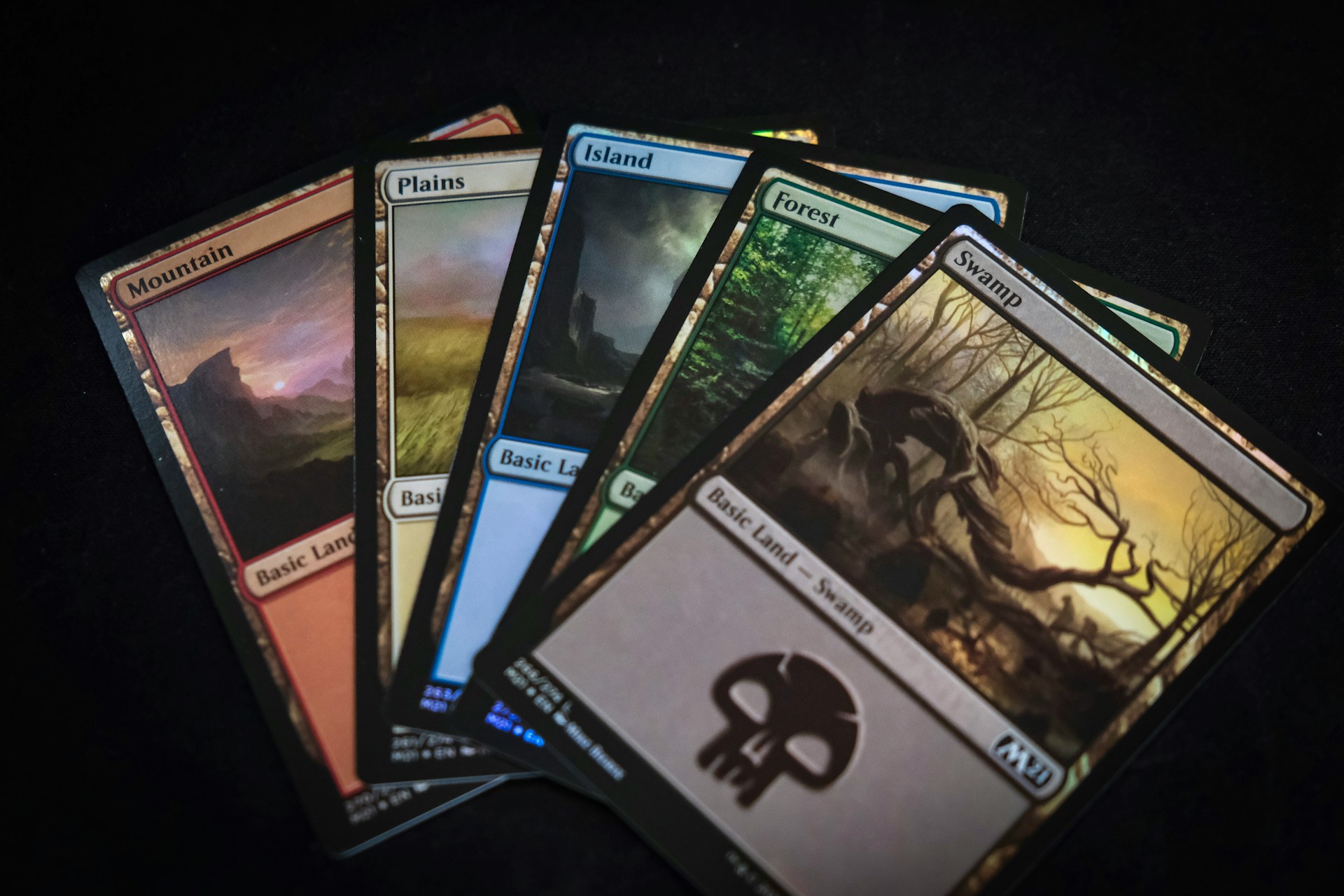
Better Games, More Than a Number
The new Commander Bracket Beta is meant to help players have better games by giving us a common language to talk about power levels. It’s a framework that helps strangers and friends alike say, “Hey, my deck sits around here, so I’m looking for a game at this level,” or “what bracket do your decks fit in, so that I can pick one of mine that fit the that level of play.“
I suggest shifting the focus away from thinking about how your decks sits in a category as an absolute based on whether or not the deck has Game Changers or infinite combos, and instead understand how your deck fits in with the types of decks that the bracket describes.
Focusing too much on Game Changers, I believe, misses the point of it all.

Brackets are a Guide, Not a Box
In the original article, Gavin Verhey mentions that decks should be able to play up or down one bracket, and I believe that this accounts for the four-player format that is commander. This allows for the variance between decks at the table. If one player has a slightly more powerful deck than the others – even if each player has accurately represented which brack their deck sits in – the rest of the table can band together to defeat the deck that is in the lead; this is part of the nature of the format. This new beta system isn’t about strict divisions – it’s about setting expectations so that games feel fair and fun.
I play this game for fun – first and foremost – and I want more games to feel fun and for everyone to have a good time, win or lose. I hope you do, too.
The bracket system feels similiar to conversations I’ve already been having when I sit down at my LGS with strangers, or even with my regular play group. I was starting the conversation with something like, “I have lower power, mid power, and higher power. What type of game are we looking for?” The bracket systems adds more structure to the conversations I found were already happened and gives us a shared context for what those levels look like, might feel like, and actually mean. This makes those conversations easier to have.
It’s Less About Where Your Deck Sits, and More About Where It Fits
I suggest that when you are evaluating and preparing your deck for the discussion around what bracket your deck sits in, think about how it plays not just about whether or not it has Game Changers in it. Individual cards matter, but they aren’t the whole picture.
A deck’s overall speed, efficiency, and synergy are equally as important to understand and evaluate as the Game Changers. What does your commander do? How smoothly does your deck execute its game plan? How early/quickly can you deck win with regularity if left unchecked? Those factors define power level more accurately outside of the Game Changers. Can your deck hold its own against and defeat another deck that thas Game Changers in it? Then it might fit that bracket 3 or 4, even if your deck doesn’t include Game Changers. Critical thinking is a critical element to all of this. A highly tuned deck that can win quickly and early, is more than likely going to fit within a higher bracket. I believe that you know what you want to do, and what your deck wants to do as is capable of. Just be honest. We could all do with more honesty in our lives.
There’s nuance here between the brackets, defined, and how your decks plays within and against that framework.
At the end of the day, this new bracket system is a tool to help us play in and generate games that feel better for all of the players involved. I suggest that if you think that your deck sits someone between bracket 2 and 3, for example, you can say that as part of the discussion.
“My deck is a high two, maybe a low three, with no game changers.”
Let’s use these brackets to help set expectation, not draw hard lines. The goal is to help players find the right table environment for the kind of game they want to play.
Without a Doubt, This System is Better and It’s a Start
I feel that this bracket system huge improvement over the old 1 – 10 scale, which often didn’t generate alignment between players because the levels where ill-defined. Having some defined guidelines without being entirely prescriptive empowers players to think about their deck critically and identify if their deck matches up with the types of decks in a given bracket or not.
It’s not perfect, but I believe that this is a positive step towards what we want as Commander players – a way to have better games by utilizing the pre-game discussion.
Let me know what you think in the comments below!

